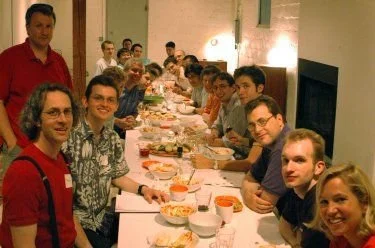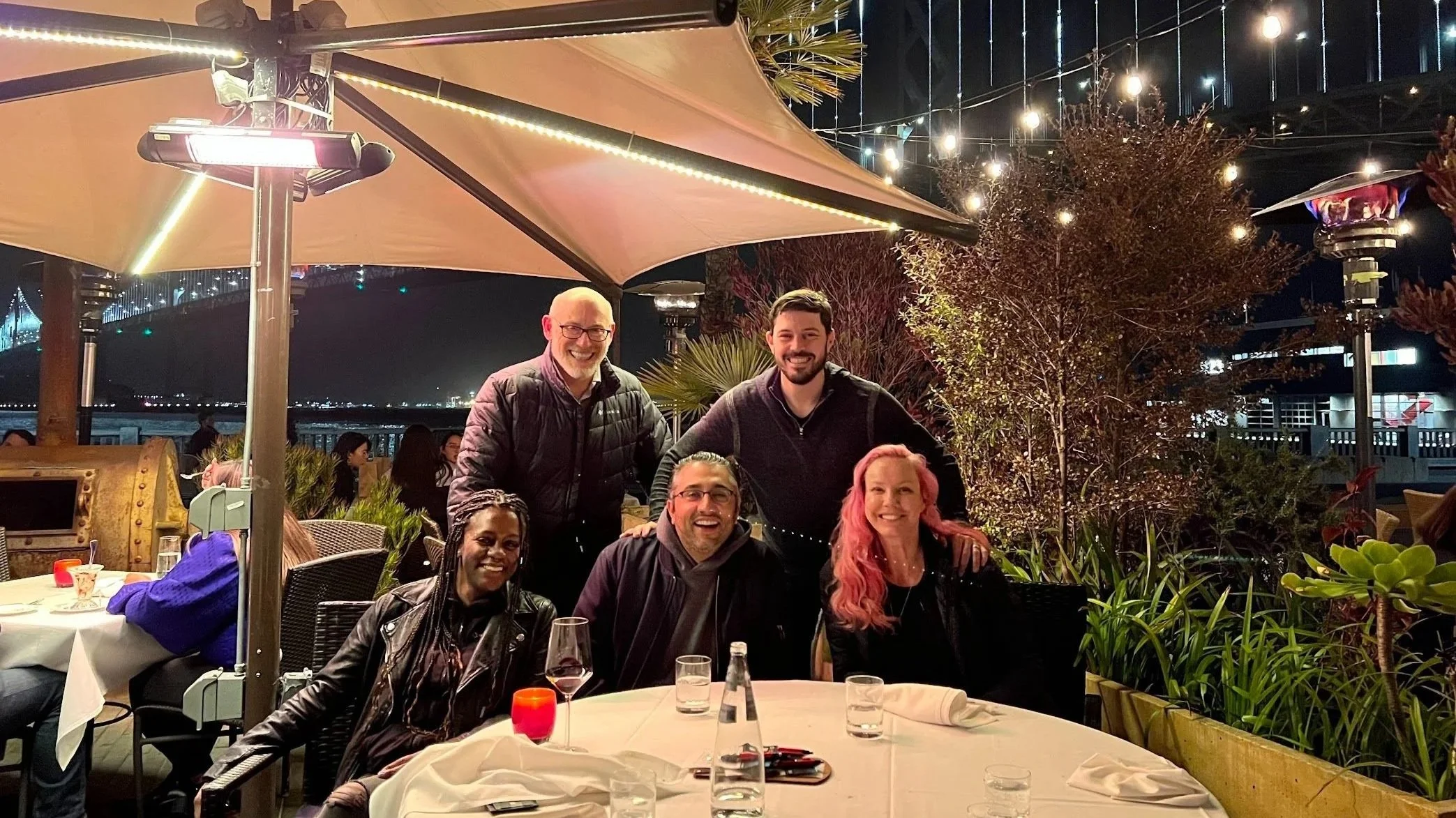Why Do 99% of Startup Accelerators Fail?
In 2005, Paul Graham, Trevor Blackwell, Jessica Livingston, and Robert Morris decided to run an experiment. Paul had a hypothesis that undergraduates were undervalued when it came to starting companies. At a time when almost all VC’s required a “business cofounder” to run the company (aka a CEO with an MBA from a fancy school), Paul et. al. believed that the world was changing,
“This summer, as an experiment, some friends and I are giving seed funding to a bunch of new startups. It's an experiment because we're prepared to fund younger founders than most investors would. That's why we're doing it during the summer—so even college students can participate.
We know from Google and Yahoo that grad students can start successful startups. And we know from experience that some undergrads are as capable as most grad students. The accepted age for startup founders has been creeping downward. We're trying to find the lower bound.”
Their summer 2005 experiment — referred to as the Summer Founders Program — is today better known as Batch #1 of Y Combinator.
SFP included Alexis Ohanian (Reddit, Initialized Capital, 776 Ventures), Justin Kan (Kiko, Twitch) and Sam Altman (Loopt, OpenAI)
Fast forward twenty years and there are self-proclaimed “startup accelerators” around the world. Yet despite all of the innovations that have occurred over the past two decades — technologically, socially, and business-wise — YC remains the world’s preeminent accelerator — and it’s not even close.
So why is it that 99% of accelerators fail to live up to their expectations?
What is a Startup Accelerator?
Let’s start with a definition, to make sure we’re all on the same page.
The key characteristic of a startup accelerator is that it accelerates a startup.
You might think I’m being facetious, but I’m not. A startup accelerator is a program that is purpose-built to accelerate the trajectory of a high-growth tech startup. Implicit in that definition is that the participants are founders/cofounders of a startup with a clearly-defined market hypothesis (a business idea). They are not founders in search of an idea, a cofounder or a market for their technology.
This distinction is crucial (and we’ll get back to it later).
What Do Startup Accelerators Do?
The basic concept of a startup accelerator has changed very little since the Summer Founders Program. In October 2005, Paul Graham shared some of his learnings from the initial batch. It’s incredible how many of those observations remain at the core of today’s accelerators:
Mentorship
“Some we helped with technical advice-- for example, about how to set up an application to run on multiple servers. Most we helped with strategy questions, like what to patent, and what to charge for and what to give away. Nearly all wanted advice about dealing with future investors: how much money should they take and what kind of terms should they expect?”
Pitch Practice and Demo Day
“The weekend before the demo day for investors, we had a practice session where all the groups gave their presentations. They were all terrible. We tried to explain how to make them better, but we didn't have much hope. So on demo day I told the assembled angels and VCs that these guys were hackers, not MBAs, and so while their software was good, we should not expect slick presentations from them.
The groups then proceeded to give fabulously slick presentations. Gone were the mumbling recitations of lists of features. It was as if they'd spent the past week at acting school. I still don't know how they did it.”
Investor and Customer Intros
“I was surprised how much time I spent making introductions. Fortunately I discovered that when a startup needed to talk to someone, I could usually get to the right person by at most one hop. I remember wondering, how did my friends get to be so eminent? and a second later realizing: shit, I'm forty.”
Peer Learnings
“Just as happens in college, the summer founders learned a lot from one another-- maybe more than they learned from us. A lot of the problems they face are the same, from dealing with investors to hacking Javascript.”
Batch Format
“Another surprise was that the three-month batch format, which we were forced into by the constraints of the summer, turned out to be an advantage. When we started Y Combinator, we planned to invest the way other venture firms do: as proposals came in, we'd evaluate them and decide yes or no. The SFP was just an experiment to get things started. But it worked so well that we plan to do all our investing this way, one cycle in the summer and one in winter. It's more efficient for us, and better for the startups too.”
Twenty years later, startup accelerators around the world all follow roughly the same approach as that first Y Combinator batch:
Cohorts of startups / founders participate in a program that takes place over a defined period of time
The accelerator invests on standardized terms (typically at a lower valuation than a traditional VC would provide — thus pricing in the perceived benefit of the program)
Founders benefit from both peer learnings and the peer pressure that comes from being in a class / batch
The organizers provide mentorship and facilitate introductions to customers and potential investors
Most programs conclude with a “demo day” event, where potential investors can meet all of a program’s startups at once
The most significant evolution of accelerators has been the addition of standardized content intended to streamline learnings that almost all first-time founders have, such as:
Go-to-market (sales/marketing best practices)
Finding product-market fit
Fundraising
Startup Schools are Not Accelerators
A significant percentage of programs offered to startups around the world are not, in fact, accelerators. They are startup schools.
Startup schools teach founders the basics of running a company along with various concepts and methodologies related to entrepreneurship. But they do not accelerate a company in a fundamental sense.
True acceleration changes the trajectory of a startup by instilling founders with the best practices and work habits needed to succeed. And if we’re talking about building world-changing companies, then what we’re referring to is specifically, “instilling founders with the best practices and work habits needed to create billion-dollar companies.”
How does that happen? Through one-on-one mentorship.
If the definition of a startup accelerator is “a program that accelerates startups” and the primary means through which these programs effect change is through mentorship, then the quintessential requirement of a good startup accelerator is good mentorship.
But what is “good” mentorship?
The One About Youth Sports
Let me tell you about my friend Kenndal McArdle.
Like me, Kenndal is an early-stage investor. He is also a former founder. Kenndal and I have kids that are the same age and we both coach their sports teams. But there’s one big difference in what we bring to the table in that regard.
You see, one of us was a first-round draft pick of the Florida Panthers and played in the NHL. And one of us is me.
While we can both teach our kids the fundamentals of playing sports, only one of us has first-hand experience in the best practices and work habits necessary to reach the highest echelons of professional sports. Kenndal has a gold medal from the 2007 World Junior Championships. I watched the 2007 World Junior Championships on TV. We are not the same.
At a basic level, this is the fundamental flaw with 99% of startup accelerators. The mentorship in almost all of the world’s “accelerators” is provided by well-meaning individuals who have zero personal experience at the highest echelons of tech. Many have genuine experience building and/or investing in startups, but the vast majority have no firsthand experience building billion-dollar companies (as a founder, employee or investor).
They can teach topics, but they don’t actually know what it takes to reach the pinnacle.
Spotting Opportunity is Only the First Step
Almost all accelerators are founded by individuals who observe specific problems and/or opportunities within their ecosystems.
Y Combinator’s founding was a response to Paul Graham’s observation that “hackers” (specifically, undergraduate hackers) were not getting as much funding as he felt they deserved and that there was an investment opportunity to be had in addressing that need.
Techstars was founded in the tiny community of Boulder, Colorado by David Cohen, Brad Feld, David Brown and Jared Polis, who believed that there was a lack of funding available to founders in middle America and that there was an investment opportunity to be had in addressing that need.
Boulder is a wild place 🤘
500 Startups’ origins came from the observation that women, minority and foreign founders did not have access to the same degree of funding that white male Stanford graduates had access to and that there was an investment opportunity to be had in addressing that need.
So why did these accelerators flourish while so many others failed? It starts with the experience of the founders:
Y Combinator: YC cofounders Paul Graham and Robert Morris previously cofounded Viaweb, the world’s first application service provider. They subsequently sold the company to Yahoo! and witnessed Yahoo!’s meteoric rise through the dotcom bubble.
Techstars: David Cohen, David Brown and Jared Polis all cofounded multiple successful tech startups while cofounder Brad Feld cofounded both startups and VC firms (most notably Foundry Group).
500 Startups: In addition to founding his own startups, Dave McClure was a member of the famed PayPal Mafia and an early employee at Simply Hired.
In all three cases, the founders had firsthand experience working at globally-successful tech startups. While they were not the founders of those companies, they had experience working with (and observing) the habits of exceptional founders both as employees within such companies and as investors later on. They understood from multiple angles what exceptional looked like.
But, more than that, they also had direct relationships with dozens of other founders and early employees who had similar firsthand experience inside the world’s biggest tech companies. Relationships that they could leverage for the benefit of the startups that went through their programs. (Recall Paul Graham’s observation from Y Combinator’s first batch: “I discovered that when a startup needed to talk to someone, I could usually get to the right person by at most one hop.”)
Anatomy of a Premier Accelerator
Let’s get back to the topic of mentorship.
What sets the world’s best accelerators apart is the strength of the teams working with founders. The quality of the mentorship, as well as the introductions that mentors can potentially make.
This starts with the employees of the accelerator. The best accelerators employ partners, entrepreneurs-in-residence and even operational staff who have firsthand experience working in some of the world’s fastest-growing tech companies.
Here are just a few of the people I had the privilege of working with at 500 Startups back in its heyday:
Jake Gibson (previously Cofounder of NerdWallet)
Sheel Mohnot (previously Founder of FeeFighters, which he sold to GroupOn where he became VP of Business Development)
Marvin Liao (previously head of international markets for Yahoo!)
Arjun Dev Arora (previously Founder of ReTargeter)
Binh Tran (previously Cofounder of Klout)
Elizabeth Yin (previously Cofounder of Launchbit)
Eric Bahn (previously Founder of Beat the GMAT and early employee at Instagram)
Mike Sigal (multiple time cofounder with both acquisitions and IPOs under his belt)
A gathering of a few old friends
A few of these individuals were founders of unicorns. But all of us had direct, firsthand experience with billion-dollar tech companies (as key employees, founders/early employees of companies that were acquired into unicorns, and as investors). We had each seen firsthand the best practices and work habits necessary to reach the highest echelons of tech.
That experience is key. But it’s not just the employees. It’s their personal networks and the multiplier effect that comes from them.
On Density and Mentorship
The world’s best accelerators surround founders with mentors and subject-matter experts who have directly contributed to some of the world’s most successful tech companies. Some of those mentors are employees of the accelerator. Many more come from the employees’ personal networks.
It’s this ability to provide founders with a wide variety of high-quality mentorship that differentiates the best accelerators from the rest. Ultimately, quantity of “good” mentors matters to the ongoing success of an accelerator almost as much as quality.
The companies within an accelerator batch are generally trying to solve vastly different problems in a variety of markets. While some of the mentorship topics (e.g. fundraising) have commonality across the batch, many more — from sales and marketing to product development — differ. So being able to pair each founder with multiple mentors who have direct experience in their industry and with the specific problems they’re trying to overcome matters.
If you think about my friend Kenndal, he’s a phenomenal mentor for anyone who wants to play professional sports. But he has far more to offer someone whose specific goal is to play left wing in the NHL than others. As a mentee strays further away from his lived experience (from left wing to other hockey positions and from hockey to other sports), his experiences and mentorship will necessarily be less relevant and specific. Introductions that he can potentially make will similarly be fewer and less direct.
This is why accelerators in smaller ecosystems generally fail over the long term. Even if there are a handful of unicorns locally, the specific experience and advice of the mentors coming from those companies will only resonate with a subset of founders. You can also only call on those same people so many times. If you think about it as a “snowball effect”, it’s a lot harder to build a snowman when there isn’t much snow on the ground.
This is why Silicon Valley has such an advantage when it comes to startup acceleration: experience and mentorship compounds.
When I was at 500 Startups, if I wanted someone with a particular type of experience to stop by (for office hours, to meet with a specific company or to deliver a talk), I could easily reach out to multiple people at multiple companies and find someone willing and able to drop by our San Francisco office. That’s simply not possible anywhere else in the world.
Even YC — which originally split batches between Silicon Valley and Boston/Cambridge — ultimately shifted entirely to the Bay Area. In 2009, Paul Graham wrote the following:
“I think it will be better for the startups we fund to all be in the Valley. We never tried to claim to the startups in the summer cycles that it was a net advantage to be in Boston. The most we could claim was that we could mitigate the disadvantages sufficiently well—for example, by flying everyone out to California to present to investors at our Mountain View office. But we did worry that the Boston groups were losing out. Boston just doesn't have the startup culture that the Valley does. It has more startup culture than anywhere else, but the gap between number 1 and number 2 is huge; nothing makes that clearer than alternating between them.”
But, But, But…
“But wait!” you say, “What about all of those big name accelerators around the world?”
How could the above claim hold true if so many prominent accelerators have created programs in cities around the world?
Simple.
Those “global” programs aren’t actually startup accelerators. They’re mostly government- and corporate-funded startup schools.
About 10 years ago, governments and corporates started approaching some of Silicon Valley’s accelerators with a proposition: if we pay you money, will you run a program locally in our ecosystem / for our specific industry?
At first glance, there seemed to be clear synergies. Founders in underrepresented geographies or industries would get programming, education and mentorship from experienced Silicon Valley founders and investors. Accelerators would gain exposure, access to new markets and revenue. They could expand their impact globally (which many genuinely wanted to do). But it didn’t take long before the shine wore off.
It turns out that few, if any, of these programs consistently birthed companies that the accelerators actually wanted to invest in. So while the first few batches were typically led by experienced Silicon Valley founders and investors excited to visit new ecosystems, before long the quality of mentorship plummeted as the accelerators shifted resources. Out of town experts were soon replaced with inexperienced local mentors, augmented by a roving band of “digital nomad” mentors who travel the world, offering their services to any accelerator or incubator willing to pay their room and board (trust me, there’s a lot of them).
Over time, many of these accelerators became addicted to the (very significant) revenue that governments and corporates around the world offered. They created entire divisions dedicated to selling and staffing such programs (in some cases, those divisions became larger than the actual core fund / accelerator). A focus on DPI was replaced by an obsession with program margin, often with disastrous consequences.
But There Have Been Successes Outside of Silicon Valley
Yes and no.
Over the past 20 years, there have been a number of examples of accelerators operating successfully for brief periods of time outside of Silicon Valley. But almost none of them succeeded over the long-term. In many cases, these programs were founded in nascent startup ecosystems hungry for any sort of cohort-based programming and benefited from an initial "burst” of extremely high quality founders. In others, an initial set of high-quality mentors eventually gave way to inexperienced replacements, with the quality of the program (and its results) soon following. We really haven’t seen accelerators form outside of Silicon Valley that have repeatedly, consistently shown an ability to take early-stage startups and accelerate them into unicorns.
What we have seen come out of other geographies are some of the most incredible, innovative “pre-acceleration” programs. Recall my earlier assertion that a startup accelerator is a program that is purpose-built to accelerate the trajectory of a high-growth tech startup. What about before then?
In 2011, Matt Clifford and Alice Bentinck founded Entrepreneur First in London. Their observation: that there was a lack of mentorship and guidance available for talented individuals who had the potential to be founders but didn’t necessarily have a specific idea in mind.
In 2012, Ajay Agarwal founded Creative Destruction Lab at the University of Toronto. His observation: too many PhD researchers were being hired directly into large tech companies instead of commercializing their research.
Both of these organizations have become globally impactful, each with billions of dollars worth of equity value created and multiple unicorns emerging from their programs.
(At this point, I’ll admit that the line between accelerator and pre-accelerator is a blurry one at best. YC, for example, is known to accept some founders whose ideas aren’t yet fully formed, while both Entrepreneur First and Creative Destruction Lab accept incorporated startups. The distinction as I see it is about whether the program primarily focuses on helping founders figure out whether or not a concept could be massive vs. instilling the best practices and work habits necessary to accelerate and ultimately reach that level of success.)
Accelerating the Rest of the World
We’re getting to the finish line here, I promise!
If the quintessential requirement of a good startup accelerator is good mentorship and only Silicon Valley has a sufficient quantity and diversity of mentors to cater to a wide diversity of founders, how can we reasonably accelerate startups in the rest of the world?
By leveraging Silicon Valley’s talent.
Side note: I’ve found over the years that, for some reason, this simple, seemingly innocuous statement offends a lot of people.
If I were to say to a minor league hockey coach, “I can bring some former NHL players to come work with your kids for a week,” or “We’re running a camp on the sidelines of this year’s all-star game and we’d like to invite some of your kids to join,” every single coach would be over the moon. No one would respond, “No, no…we don’t need that. One guy from our town made the NHL 15 years ago. We’re good.” Yet for some reason that’s the reaction that comes from many ecosystem builders when it comes building connections with Silicon Valley.
I’m not going to go down the rabbit hole of why this happens (it’s surely a deep one). Suffice to say, the idea of leveraging the world’s largest pool of startup experience to augment local mentors shouldn’t be a controversial one.
In any case, there are two obvious ways to leverage Silicon Valley experience for the benefit of global ecosystems: bring Silicon Valley’s mentors to the world or bring the world’s startups to Silicon Valley.
Both approaches can work. In fact, they’re not even exclusionary.
I won’t go into a discussion of how to do this — that’s a post for another day. Instead, I’ll conclude with the following observation:
Like many things in Startupland™, the majority of accelerators around the world have failed as a result trying to replicate something that can (at least today) only work at scale in Silicon Valley. But that doesn’t mean there can’t be successes elsewhere.
They just won’t look like “the YC of X.”





